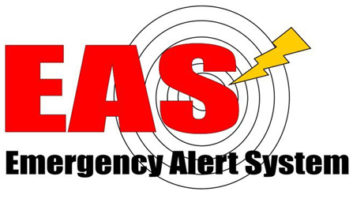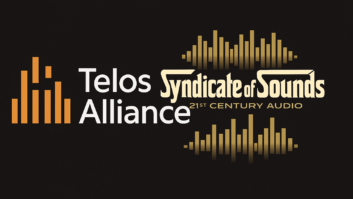 Sage Alerting Systems supports the NAB petition that asks the FCC to move quickly to allow voluntary use of software-based EAS products.
Sage Alerting Systems supports the NAB petition that asks the FCC to move quickly to allow voluntary use of software-based EAS products.
Sage says it would bring such products to market if the FCC allows their use.
Harold Price, president of the manufacturer, filed comments. “We agree with the NAB petition, it is time to allow for better integration of EAS and modern technology. The practical effect of Part 11 is that it requires a separate hardware device that meets various audio, data and environmental requirements, making it impractical to add EAS functionality to other components of the air chain.”
Price listed several advantages of doing away with hardware requirements.
For instance users would be free to optimize their air chains, placing EAS where it made the most sense, “leading to reduced rack space, cabling, format conversion and overall complexity.”
Users could use discrete hardware, mixed-purpose hardware, or EAS as a software module either on a PC or in a standardized in-house server.
Hardware used to host EAS software could be ruggedized as needed. “Small users need not pay for those portions of traditional EAS hardware that they won’t use. Large users can have high reliability, redundant power supply, hot spares, as they like.” Manufacturers could offer a wider range of solutions without costs of certifying each product model.
“Modernization of the hardware requirements would result in cost savings,” Price continued. “However, removing the hardware requirements completely would result in greater savings, as a reduction in analog interface requirements, allowing for a complete network stream in and network stream out, via simple streaming or AES 67.”
He said EAS could run on CPUs hosted in existing equipment, either as a plug-in card or as a software component running on a shared computer.
“Many consoles, automation/playout, audio processors, transport and transmission equipment run on this type of hardware. Removal of the EAS hardware requirements would allow EAS capability to be added to any of these components. Software-only EAS would not preclude the use of a traditional standalone hardware device, but would allow for closer integration of EAS into radio and TV broadcast chains where EAS is made to work within the system, rather than trying to force the existing system to accommodate EAS.”
Price discussed other benefits and considerations; you can read the filing here.
One issue to be addressed, he said, is compatibility of new products with the existing EAS ecosystem.
“All of the existing EAS equipment manufacturers ran through the FEMA-sponsored Conformity Assessment Program in 2011. This program is no longer available.”
He said software-only EAS implementations should be required to submit the results of a modernized standard conformity assessment test before they can be used by EAS participants to meet FCC Part 11 requirements.
Price concluded: “As the NAB notes in its petition, Sage is no longer building the Sage 3644 product. We continue to offer hardware repair, and user support via phone and email, as we have done since 2008. We will also continue to provide software updates. We hope that the FCC will permit software EAS in the future, and we would offer products in that arena.”





